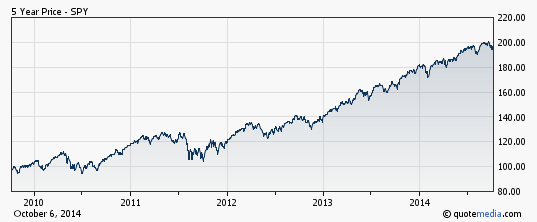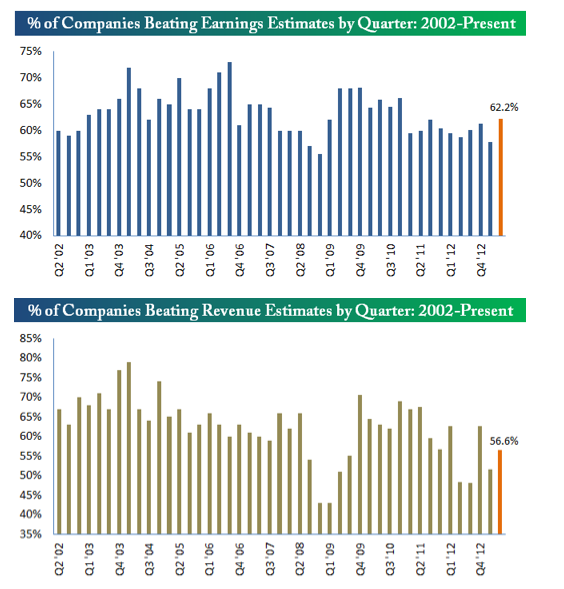October is here, which means winter is coming soon. Now is a good time to weatherproof your home before the weather gets really cold, and it might also make sense to take a similar approach with your investment portfolio.
Just like you want to protect your house from the damaging effects of wind, rain and snow, it can pay to make sure your investments can withstand market turbulence.

Fortifying your investments is particularly topical now given the recent pickup in market volatility, and the Federal Reserve beginning to shift away from its easy-money ways.
One more thing. October has a reputation for big market crashes, although that certainly doesn’t mean you should sell all your stocks and hide out in cash.
The idea of weatherproofing your portfolio isn’t about making big, wholesale changes.
Rather, long-term investors might want to think about making minor adjustments, such as checking that their portfolio hasn’t gotten out of whack, and making sure they’re not paying too much in fees. We’re talking about cleaning the gutters and putting in storm windows — not building a new addition.
So, here are 5 sensible steps investors should consider as we finish out 2014:
1) Portfolio rebalancing
Portfolios have a tendency to drift from their original asset allocations as a result of market moves over time.
For example, now that the U.S. stock market has climbed 200% since the financial crisis, the percentage of equities in your portfolio may have grown too large for your original risk tolerance.
SPDR S&P 500 ETF (SPY)
History shows that investors are usually better off sticking to their original allocation targets. And that’s where portfolio rebalancing comes in.
The idea is periodically trim winning investments, and add to areas of your portfolio that have declined in value. This may seem counterintuitive at first, but rebalancing helps you get back to the asset allocation you initially decided on.
This discipline also helps instill the practice of buying low and selling high, which is the goal of investing, after all.
2) Consider dividends for defense
Owning some high-quality, dividend-paying stocks is another time-tested way protect your portfolio.
When markets are flatlining or contracting, dividends can account for a significant portion of a stock’s total return and help cushion the broader portfolio against big losses.
Studies have shown that companies with a long record of paying dividends are often better managed.
And in general, investors tend to favor more conservative, dividend-paying sectors like utilities in volatile markets.
3) Spread it around
One of the key precepts of modern portfolio theory is to diversify, or spread your investments across several asset classes such as stocks, bonds, real estate and commodities.
The basic idea is that a portfolio drawing from widely divergent asset classes tends to have less price volatility. In other words, as some assets fall in value, others will rise. (See our ultimate guide to investing terms.)
You also want to make sure that no one individual stock gets to be too big a part of your overall portfolio. This reduces the risk of major damage if the company blows up. On top of that, it can make sense to have stock investments that span across different industry sectors, geographies and market capitalizations.
What about bonds? Make sure your fixed income lineup of investments come with varying maturities and different sensitivities to swings in interest rates and inflation rates.
4) Dry powder
In an uncertain market, increasing a portfolio’s cash position is worth a serious look.
Covestor manager David Levine, who oversees the Aspect Large Cap Value Investment portfolio, recently made the case that cash actually is an investment.

Levine says he uses his cash position to slow down the movement of his portfolio. Cash can soften the blow to a portfolio in a downward market.
On top of that, as Levine sees it, “cash provides optionality, as in the freedom to jump on investing opportunities that might arise.”
5) Minimize fees
Investment products and services come with costs and fees. That’s a given. However, investors who fail to keep to track of their fees or look for cheaper alternatives may take a far bigger hit than they imagine.
Fees are like that drafty window that can drive up your heating bills. It doesn’t seem like a big deal, but over time it can really add up.
The Securities and Exchange Commission, in a recent investment advisory, created three hypothetical portfolios that started with $100,000 and projected them over a 20-year time frame, assuming a 4% annual return.
The twist: Annual fees on the three portfolios varied from 0.25% to 0.50% and 1%. Over two decades, the portfolio with the 0.25% annual fee returned roughly $30,000 more than the one with a 1% fee structure.
Winter isn’t here just yet, but that doesn’t mean you can’t start weatherproofing your home against the elements. The same idea can apply to your financial portfolio.
Continue learning: How rebalancing can help protect your portfolio in an uncertain world
—
DISCLAIMER: The information in this material is not intended to be personalized financial advice and should not be solely relied on for making financial decisions. All investments involve risk, the amount of which may vary significantly. Dividends reflect past performance and there is no guarantee they will continue to be paid. Past performance is no guarantee of future results.





